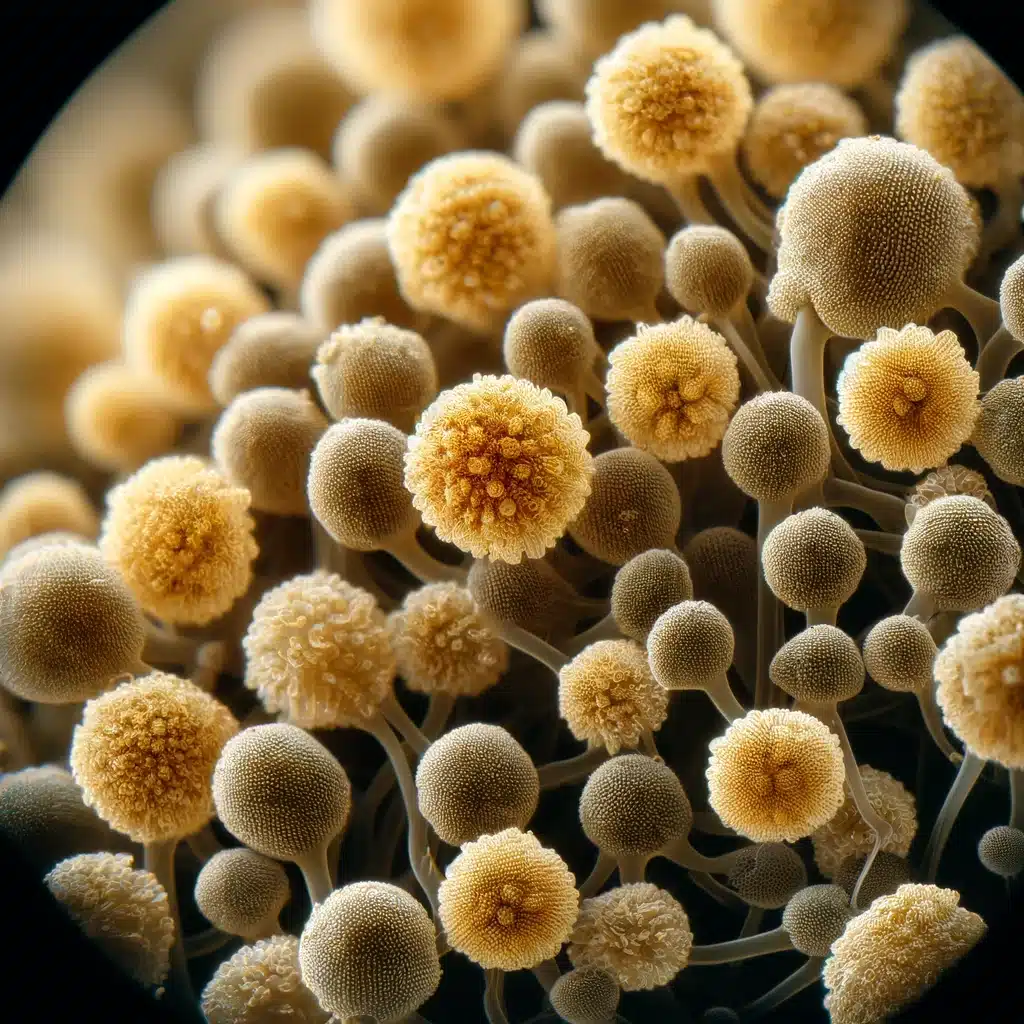How to Collect and Store Cannabis Pollen for Breeding Success
- POSTED ON April 18, 2024
- BY TORONTO WEED DELIVERY

Hello to every cannabis enthusiast in Toronto tuning in! If you’re ready to take your growing game to the next level, you’ve got to learn how to collect and store that precious pollen. Think about it this way: safeguarding valuable genetics and then rolling out your custom strains is the game plan here. Let’s break it down—it really isn’t rocket science once you get the hang of these several important steps.
I’ve been collecting and storing cannabis pollen for years, and I’ve learned a thing or two along the way. Hang tight because I’m about to open up my secret playbook just for you. Buckle up to master the art of pollen in your cannabis garden and open doors to endless possibilities!
Table of Contents
The Vital Role of Male Cannabis Plants in Breeding and Genetics
Male cannabis plants are the unsung heroes of the cultivation process. While they don't produce the buds we all know and love, they play a crucial role in breeding and preserving genetics. Without male plants, we wouldn't have the incredible variety of strains available today. Their pollen is necessary for creating new hybrids and maintaining the genetic diversity of cannabis.
Identifying Male Cannabis Plants
So, how do you spot a male cannabis plant? It's all about those physical characteristics. Male plants tend to be taller and lankier than females. They have fewer leaves and branches, giving them a more open structure. But the real giveaway is the presence of male flowers or "pollen sacs." These small, round balls form at the nodes where branches meet the main stem. They're a surefire sign you've got a male on your hands.
Collecting and Storing Cannabis Pollen for Future Use
If you're into breeding or preserving genetics, collecting and storing cannabis pollen is a must. It's not as simple as just scooping it up, though - there's an art in harvesting and storing pollen properly.
When it comes to harvesting pollen, timing is everything. You want to catch those pollen sacs just as they're starting to open but before they fully release their payload. I like to place a clean sheet of parchment paper under the male plant and give it a gentle shake. The pollen will fall onto the paper, making it easy to collect.
Another method is to carefully remove the pollen sacs and let them dry in a cool, dark place for a few days. Once they're dry, you can shake out the pollen onto your parchment paper.
Best Practices for Storing Pollen Long-Term
Proper storage is key to keeping your pollen viable for future use. Pollen is best kept in a cool, dry, dark place with minimal air movement. I store mine in airtight containers in the fridge or freezer. Glass jars or plastic vials work well - just make sure they're completely clean and dry before filling them with pollen. It's also a good idea to label your containers with the strain name and collection date. That way, you can keep track of your pollen library and know how long it has been stored.
Pollen sacs are the defining feature of male cannabis plants. But have you ever wondered how they develop? It all starts in the late vegetative stage, as the plant begins to transition into flowering. At the nodes, you'll notice small bumps beginning to form - these are the pollen sacs in their early stages. As the plant matures, the sacs will grow larger and more defined, eventually taking on a distinctly round, ball-like shape. To me, they look just like miniature bananas clustered together.
The Process of Pollination in Cannabis Cultivation
Pollination is the key to cannabis seed production. It's a beautifully simple process that requires careful control in a cultivation setting. When male pollen sacs fully ripen, they burst open, releasing millions of pollen grains into the air. In nature, the wind carries these grains to female plants, which are fertilized and initiate seed development.
In a grow room, however, pollination is usually intentional. Breeders will selectively pollinate female plants by physically applying pollen to the buds. This allows them to create specific crosses and control the genetic outcome. Selective breeding is how we get the mind-blowing variety of cannabis strains available today. By crossing plants with desirable traits, breeders can create new strains that are more potent, flavorful, or medicinally effective.
Male plants are the key to this process. Their pollen carries the genetic material needed to create the next generation of plants. By carefully selecting male plants with the traits they want to pass on, breeders can steer the evolution of cannabis in a specific direction. It's a painstaking process, but one that has given us some of the most iconic strains in existence.
Hermaphrodite Cannabis Plants and Their Impact on Cultivation
While male and female plants are the norm in cannabis, there's a third category that can throw a wrench in the works: hermaphrodites. Hermaphrodite cannabis plants develop both male and female reproductive organs. This means they can produce pollen sacs AND buds on the same plant.
In a cultivation setting, hermaphrodites can be a major problem. If their pollen sacs go unnoticed, they can accidentally pollinate an entire crop, leading to seedy buds and reduced quality. That's why it's crucial to keep a close eye out for any signs of hermaphroditism and remove affected plants immediately.
Even a single pollen sac can spell disaster in a grow room. The journey of a male cannabis plant starts the same as any other - with a seed. Once germinated, the young seedling will grow and develop just like a female plant through the vegetative stage. It's not until the plant begins to flower that its true nature becomes apparent.
As the days get shorter (or the light cycle is changed in a grow room), the male will start to develop pollen sacs at the nodes. These sacs will grow and mature over the course of a few weeks, eventually rupturing and releasing their pollen. This marks the end of the male plant's lifecycle - its sole purpose is to produce pollen and then die off.
Practical Applications of Cannabis Pollen Beyond Breeding
While breeding is the primary use for cannabis pollen, it has some other interesting applications as well. In recent years, there's been growing interest in the potential therapeutic benefits of pollen itself. Some studies suggest that bee pollen collected from male cannabis plants may have anti-inflammatory and antioxidant properties.
There's also a niche market for cannabis pollen as a "superfood" supplement. Proponents claim that it's a nutrient-dense source of vitamins, minerals, and amino acids. Of course, more research is needed to back up these claims.
But it's fascinating to think about the potential hidden in those little pollen grains. Once you've collected your pollen, it's time to put it to use. Applying pollen to female plants is a delicate process that requires precision and care. The most common method is to use a small paintbrush to gently dust the pollen onto the buds. This allows for targeted pollination and minimizes the risk of accidental cross-contamination.
Another technique is to mix the pollen with a neutral carrier like flour or cornstarch. This makes it easier to apply evenly and reduces waste. Whichever method you choose, it's important to work in a controlled environment with no air movement. Even a slight breeze can carry pollen where you don't want it to go.
How Long Can Cannabis Pollen Remain Viable After Collection?
The shelf life of cannabis pollen depends on how it's stored. Under ideal conditions (cool, dry, and dark), pollen can remain viable for several months to a year. However, pollen is a delicate substance that degrades quickly when exposed to moisture, heat, or light. That's why proper storage is so important. Even under the best conditions, pollen will eventually lose its potency over time.
That's why it's best to use it as soon as possible after collection for the highest success rate. If you do need to store pollen long-term, freezing is the best option. Just be sure to use airtight containers and avoid repeated thawing and refreezing, as this can damage the pollen grains.
Key Takeaway:
Male cannabis plants are key for breeding, providing the essential pollen to create new strains and maintain genetic diversity. Spotting males early is crucial—they're taller with fewer leaves and have distinct pollen sacs.
Collecting and storing pollen properly ensures it's ready for future breeding projects. Techniques like using parchment paper or drying sacs help in the collection, while cool, dry storage preserves viability. Beyond breeding, cannabis pollen might offer health benefits, although more research is needed.
Ready to Elevate Your Cannabis Cultivation? Reach Out Today!
Knowing how to collect and store cannabis pollen can revolutionize your growing game. It's about preserving valuable genetics and crafting your unique strains. Mastering timing, technique, and storage is key.
Take care not to overuse pollen and label it correctly for future reference. With practice, you'll become a pollen pro.
Ready to elevate your growing experience? Start collecting that precious pollen today! Contact Toronto Weed Delivery today for all your cannabis needs.
FAQs in Relation to How to Collect and Store Cannabis Pollen
Can cannabis pollen be stored?
Absolutely. You can keep it in the fridge or freezer inside airtight containers, ensuring its viability for future breeding projects.
How do you collect and save pollen?
Gently tap male flowers over parchment paper to catch pollen. Then, transfer it to small, labeled containers for storage.
How do you preserve pollen?
Dry it out carefully, store it in an airtight container with silica packets to remove moisture, and pop it into your fridge or freezer.
How long does cannabis pollen remain viable?
In optimal conditions within a fridge or freezer, cannabis pollen stays good for up to a year—sometimes even longer.
Breeding Ground for Bacteria
RECENT POSTS
- Exploring the Importance of the Oak Ridges Moraine
- Shopping Day Out at Richmond Hill’s Hillcrest Mall
- Why the 140th Anniversary Statue Matters to Richmond Hill
- Experience Faith and Community at Richmond Hill United Church
- Explore Mill Pond Park: A Haven for Richmond Hill Relaxation
- Discover Afternoon Tea at Richmond Hill Heritage Centre
- Explore Richmond Green Sports Centre and Park for Top Fun
- Explore Lake Wilcox Park: A Haven for Outdoor Enthusiasts
- Events at Richmond Hill Centre for the Performing Arts
- Exploring David Dunlap Observatory: A Richmond Hill Gem
- Top Scenic Walking Trails Around Rouge Valley
- Discover Peaceful Walking Trails in Markham for Relaxation

